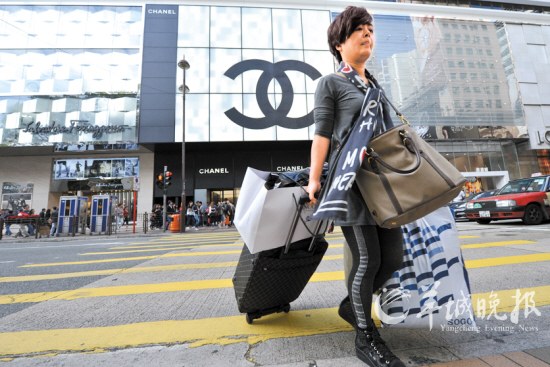

 |
Three Louis Vuitton stores in China have closed since the beginning of 2015. Recently, the close down of Louis Vuitton store in the La Perle has triggered discussion about the wave of closure of luxury stores.
The world saw an increase of the population of consumers of luxury goods from 140 million to 350 million, and the Chinese consumers now make up more than 30 percent of all luxury goods sales worldwide, according to the 2015 Report on the Global Market of Luxury Goods released by Bain&Company.
As the purchasing power of Chinese consumers for luxury goods increases, why has the market for luxury goods in China become sluggish?
For one thing, China saw the rise of the second-tier and third-tier foreign brands. For another thing, the amount of Chinese tourists' overseas shopping surges.
In 2014, more than 100 million people spent over 1 trillion yuan during their travel in foreign countries. The difference in prices at home and abroad is the main cause of the rise in Chinese tourists' overseas shopping.
Price cutting has become a general practice of a number of established luxury brands, which hopes to go through difficulties in this way. As a matter of fact, the stores need to do more than just cutting the price of luxury goods. The customers complain that it is difficult to return or replace products in China, whereas foreign stores offer convenient ways to return or replace unwanted items.
 J-10B fighters with homegrown engine in test fligh
J-10B fighters with homegrown engine in test fligh Photos of U.S. Navy intruding in South China Sea released
Photos of U.S. Navy intruding in South China Sea released Cats who immediately regretted their life choices in photographs
Cats who immediately regretted their life choices in photographs Beautiful girl from police college becomes Internet hit
Beautiful girl from police college becomes Internet hit 10 tons of copper coins unearthed in 2,000-yr old tomb
10 tons of copper coins unearthed in 2,000-yr old tomb In Pics: Amazing Chinese fighters
In Pics: Amazing Chinese fighters
 Chinese, U.S. navies hold first-ever joint exercise in the Atlantic
Chinese, U.S. navies hold first-ever joint exercise in the Atlantic When a Chinese woman marries an Indian man
When a Chinese woman marries an Indian man Photos of beautiful teacher hit the Internet
Photos of beautiful teacher hit the Internet Top 20 hottest women in the world in 2014
Top 20 hottest women in the world in 2014 Top 10 hardest languages to learn
Top 10 hardest languages to learn 10 Chinese female stars with most beautiful faces
10 Chinese female stars with most beautiful faces China’s Top 10 Unique Bridges, Highways and Roads
China’s Top 10 Unique Bridges, Highways and Roads All cisterns go for World Toilet Day
All cisterns go for World Toilet Day Politics may eclipse anti-terror alliance
Politics may eclipse anti-terror alliance Paris remains draw for Chinese tourists
Paris remains draw for Chinese tourists Sales swell of Chinese version of Viagra
Sales swell of Chinese version of ViagraDay|Week